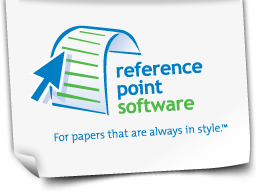How to Paraphrase and Use the Correct Citation Styles to Avoid Plagiarism
While you’re at college, you will be required to write numerous essays to demonstrate your understanding of a subject and your ability to conduct effective research. A large proportion of your research will be done by examining and disseminating other people’s work to provide information that supports your thesis.
You may wish to paraphrase some of your findings or give a direct quote that supports your ideas. While it is never a good idea to borrow other people’s work without giving credit where it is due, in academia, it is the ultimate sin. Using other people’s work without giving proper credit can not only result in your work losing credibility but can also lead to other, more severe consequences. This article describes how to paraphrase your source material by re-shaping other people’s ideas in your essays, and how to give credit to the author correctly should you want to borrow passages of their work.
How to Paraphrase without Plagiarism
The art of good paraphrasing is accomplished by knowing what to take from a passage and what to leave out. Your aim is to convey the information without copying the structure or word sequences. To do this, read the work over to get the full sense of it. Then, make a list of the essential ideas and their connections to the points you are making. Note any important keywords. Add to this list any important names used in the passage and their relevance. Make notes of any impressions and thoughts as they arise. Then write a passage using the information and your notes without referring to the original work.
When you have done this, read it through and compare it with your source material. It should clearly convey the sense of what you have sourced without looking like you have simply moved a few words or phrases around.
Example:
We will use a passage from another of our articles, i vs. An before an abbreviation, I as an example of paraphrasing. The original passage reads:
We all learned that you use an “a” before words that start with consonants and “an” before words that start with vowels. But what about abbreviations? Should you use an ΓÇ£aΓÇ¥ or an “an” before abbreviations?ΓÇ¥
ΓÇ£The accepted rule is to use the choice that matches how the abbreviation is pronounced rather than how it is spelled. For example, HIV begins with a consonant but is pronounced āCHˌīˈvē. In other words, HIV is pronounced as starting with a long ˌ”H”ˌ”I”,”V” which is a vowel; therefore, it should be proceeded by “an”. The following sentence illustrates the correct usage: An HIV positive patient was transferred to the nursing unit (ICU).
Edited version:
At school, we were taught the rules about using “a” and “an” before vowels, consonants, phonetic glides, and when a consonant sounds like a vowel. However, many people struggle when it comes to using these indefinite articles correctly before abbreviations.
The rules for abbreviations are based on their phonetics and, therefore, they have their own logic. For example, HIV is pronounced āCHˌīˈvē, so the correct usage would look like this:
An HIV test is recommended for all pregnant women to determine if medication is required to prevent the spread of the virus to the unborn child.
Using the Correct Citation Styles
At some point during your essay, it may be appropriate to quote directly from your research materials as an additional way to strengthen your argument. If you are going to use a direct quote from someone else’s work, then you must document your sources carefully so you can correctly cite your references. The most commonly used methods of citations are MLA and APA formatting. These use in-text citations, placed in the same sentences or paragraphs with the quotes.
It is very important to ensure that you use the most up to date methods of MLA and APA formatting styles as these are revised from time to time. You can either format your citations manually, or you may prefer to use MLA and APA APA formatting software which will save you significant time and ensure that you are using the correct version. With a couple of clicks of your mouse, your citation formatting will be done for you, leaving you more time to spend compiling your research and writing your essay.
David Plaut is the founder of Reference Point Software (RPS). RPS offers a complete suite of easy-to-use formatting template products featuring MLA and APA style templates, freeing up time to focus on substance while ensuring formatting accuracy.
Reference Point Software is not associated with, endorsed by, or affiliated with the American Psychological Association (APA) or with the Modern Language Association (MLA).
For more information about MLA or APA writing templates, contact us by email
Tags: apa writing, college mla template, mla writing, reference point software, writing tips
